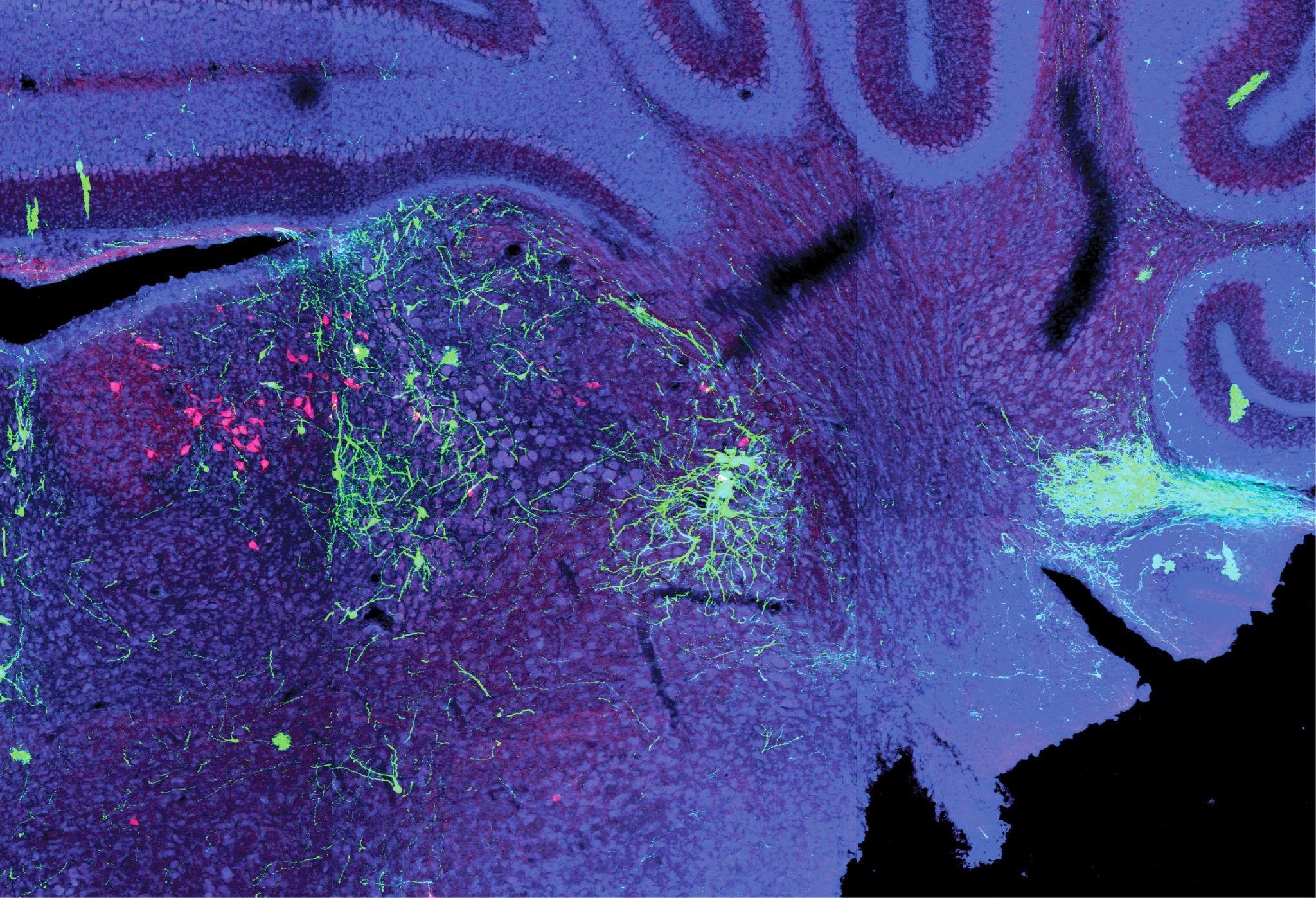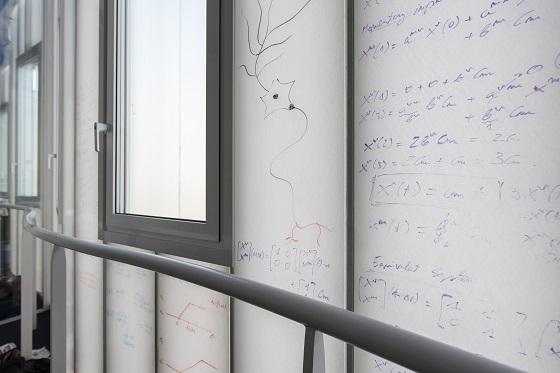
Understanding the brain at the Sainsbury Wellcome Centre
Please can you give an introduction to your research at Sainsbury Wellcome Centre (SWC)?
Dr. Edward Bracey: I’m a neuroscientist and I’m really interested in understanding how our brains make us who we are. Everything that we do; when we think, feel, see, smell, hear, laugh or love – all of those things are dependent on our brain and I really want to understand how that works.
In future this will allow us to understand what happens when things go wrong, but right now, we’re just at the stage of trying to understand the basics.
Danbee Kim: For me, one of the most fascinating things that we can’t explain about humans yet is how we can create this kind of connection that we get when we do art together, when we tell stories together, when we play music together. That’s exactly why I wanted to study neuroscience as I wanted to understand the things about humans that we can’t put numbers onto.
What are brain circuits?
Danbee Kim: We know that brains are made up of a lot of different kinds of cells, so neurons are just one of the many different kinds of cells that make up our brain. When someone studies a whole stream of neurons talking to each other, they’re studying what we would call a ‘circuit’.

Section through the medulla of the mouse brain. Vestibular sensory axons and their postsynaptic targets are labelled in green. Cholinergic neurons in red. Image credit: Dr. Andy Murray
Why is understanding the brain so challenging?
Dr. Edward Bracey: At the Sainsbury Wellcome Centre, we use a range of techniques to try and understand how these circuits work, but that’s a really complicated problem. The brain is made up of around 86 billion neurons, and a neuron can be connected with up to around 10,000 other neurons, which means that there are around 50 to 100 trillion connections in the brain.
Those big numbers are really hard to take on board, but you can think of it as there are more connections between brain cells than there are stars in our galaxy or leaves in the Amazon rainforest.
Danbee Kim: Here’s the difficulty with studying neuroscience the way we’re doing it now: imagine that you are at a party and, for some reason, you want to understand all the conversations that are going on at this party, but you are only allowed to follow one person and you are only allowed to write down one word from every conversation that they have.
Are you going to be able to recreate all the conversations from the party this way? No! [Laughs] So this is the level that we’re at in terms of our neuroscience techniques.
What are the main techniques you use to study the brain at SWC?
Dr. Edward Bracey: Normally brain tissue is colourless, which means it is really hard to see which neurons are connected to which other neurons, in fact, it is pretty much impossible unless you use some special techniques in the lab.
So to help us understand which neurons are connected, and what they’re saying to each other, we use several techniques in the lab:
- We can dye neurons to allow us to see where the connections go
- We can make neurons flash when they become active, so we know when they’re talking
- We can use electrodes to record the electrical messages they’re sending each other
- We can also look at behaviour in whole organisms, for example, we can look at body language when people talk to somebody they find attractive.
Danbee Kim: We also work with the Gatsby Computational Neuroscience Unit, where they take ideas that are coming out of the experimental and cellular work and try to implement them in computers, which end up becoming really powerful tools in the computing world.
Why is it important for people to get involved in neuroscience research?
Danbee Kim: It is really important to realise that you do have a lot you can contribute to neuroscience. The more people that we can get involved in neuroscience research, the more powerful our understanding will become.
Dr. Edward Bracey: I find it is hard to navigate the world sometimes – there’s no manual for how to use our brains properly to do that. We all struggle with certain things and we all have different ways of seeing the world, but I think those differences between us allow us all to contribute something unique to the world.
Where can readers find out more?
If you want to find out more about what we do at Sainsbury Wellcome Centre, and also help us understand our brains, then please go to the SWC website.

Inside Sainsbury Wellcome Centre. Image credit: Grant Smith
About Dr. Edward Bracey
Edward is a postdoctoral researcher in the Margrie lab at the SWC. He did his MSc in neuroscience at UCL, and his PhD on olfaction at the National Institute for Medical Research. His main focus now is on understanding how information fed from the vestibular organs (the inner ear) into the visual cortex affects visual perception. He does a lot of public engagement too, mostly working with Guerrilla Science and MAS productions, to bring science, art and music together to make it more exciting for the public. Follow on twitter @DrBraincey
About Danbee Kim
Danbee Kim is a PhD candidate in the 2013 cohort of the International Neuroscience Doctoral Programme, headquartered at the Champalimaud Centre for the Unknown in Lisboa, Portugal. She joined Adam Kampff and the Intelligent Systems lab in Sept 2013, which moved to the Sainsbury Wellcome Centre for Neural Circuits and Behaviour in London, UK in 2015. She studies cuttlefish, develops theories of intelligent behaviour, and builds interactive art installations that collaborate with the public to measure human behavior and psychophysics. She has co-written and choreographed an original musical called Hack, Punt, Tool (you can watch the 2017 production on YouTube). She also trains and plays as a musician, capoeirista, and VIRS (vigilante intergalactic roustabout scholar). To learn more please visit http://www.danbeekim.org/open-lab-notebook/.